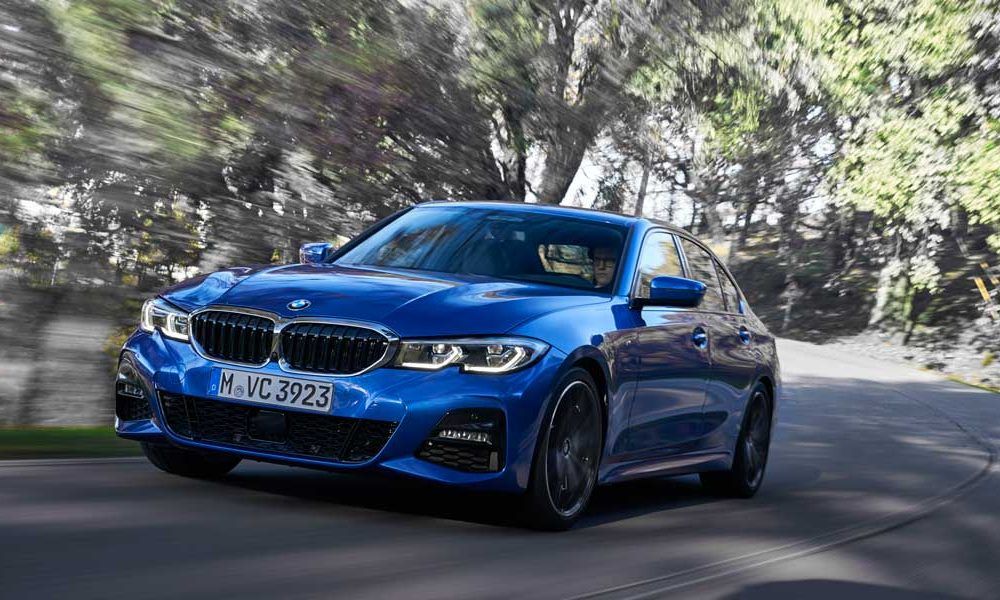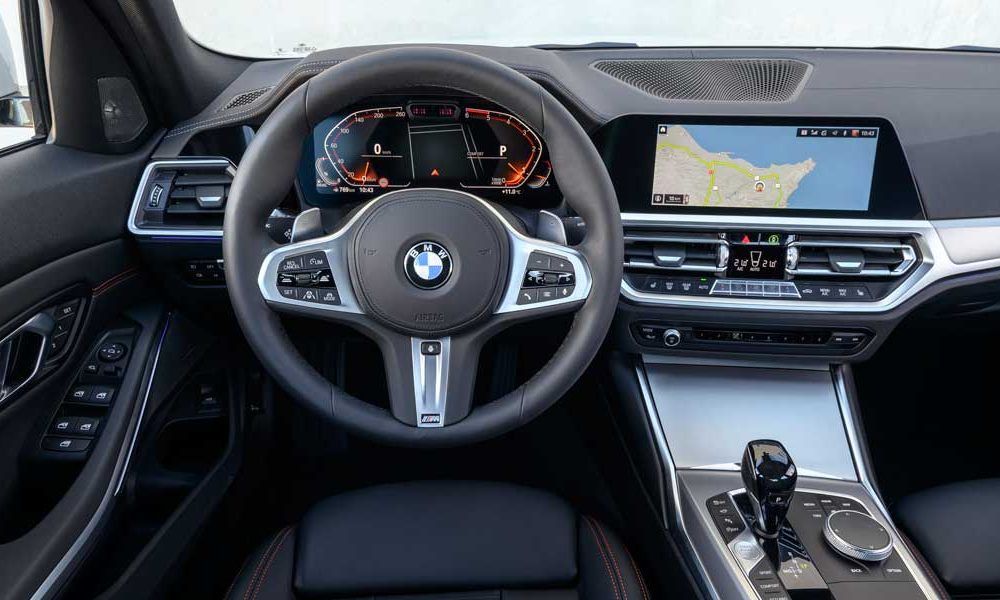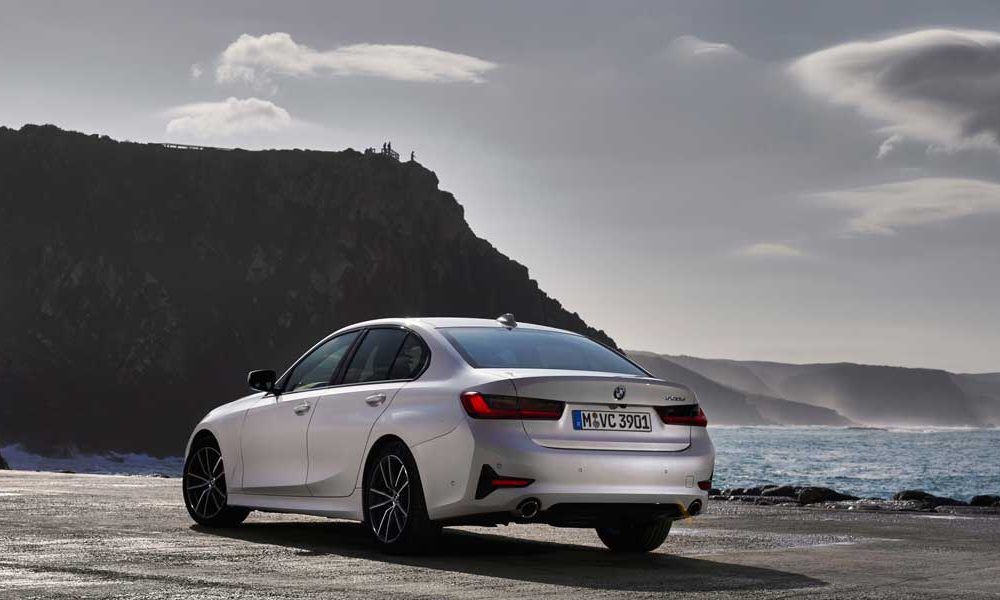“It’s the sportiest 3 Series ever,” say BMW’s engineers as they hand over the keys to the seventh generation of the best-selling BMW — the heart of the brand and the car that gave birth to the so-called ‘sports sedan’ segment. And in the next breath they add, “It is the most autonomous 3 Series ever”.
Welcome to the dichotomy of today’s car engineer. On the one hand there’s BMW’s heritage of great driver’s cars, something that cannot be compromised on, come what may. And on the other hand is today’s obsession with autonomous driving, connected this, assisted that. What we have then is a car that is sportier than it has ever been, yet you don’t have to bother driving it at all — at least up to 60kmph.

BMW 3 Series review: G20 replaces F30
If you’re even mildly interested in BMWs you have to remember model codes. E21 was the first 3 Series. E90 was the first 3 Series to be made in India. F30 is the outgoing 3 and this new one, due to come to India in mid-2019, is G20. And thus armed you can now impress your mates.
So what’s new in the G20? Well, everything. The new 3 Series is 76mm longer, 16mm wider and just 1mm taller. Back seat comfort has become increasingly important, even to BMW, and so the wheelbase is stretched by 41mm to 2851mm while the track widths have been extended by 43mm and 21mm at the front and rear. All of this makes for excellent proportions, very evidently sporty, aided by BMW’s characteristic cab rearward stance that highlights its rear-drive nature.

On the styling front this new BMW 3 Series looks really, really good. Mercifully that horrid ballooning of the kidneys hasn’t yet filtered down from the SUVs to the sedans so it remains pleasing to the eye. Of course the kidneys have become larger, more thrusting, more three-dimensional in their design, but the 3 Series is too important a car for BMW to take risks on the styling. I particularly like the cut line in the headlamps that supposedly harks back to the fourth generation E46. It’s a damn good looking car, no question about it, and my only sore point is BMW’s trademark corona ring LED DRLs have given way to L-shaped DRLs that just do not deliver a recognisable visual signature.
Over dinner at the exquisite beachside resort in Faro in southern Portugal, the only place in Europe that has bright sunny skies at this time of the year, I asked the designers about their favourite detail on the new 3 and am promptly directed to the NACA ducts at the extremities of the bumper. These ducts aren’t just a visual flourish but are also functional, channelling cooling air into the brakes, just like the original NACA ducts on the bonnets of muscle and supercars. Don’t search too hard for it because the larger nostrils of the M Sport kit our test car is wearing, completely masks this detail, lost as it is in all the gloss black inserts.
BMW 3 Series review: Connected this, that and everything
My first thought when I sat in the new 3 Series was, wow, its rivals stand no chance, at least as they stand right now. Like the 3 Series’ of the past, the cockpit is angled towards the driver, but unlike the 3 Series’ of the past the cockpit is a veritable tech fest. Gone are the traditional dials, replaced by the virtual cockpit (a curved screen which BMW engineers insist is a first and was very, very hard to do) and the speedo and tacho are arranged at the extremities with the navigation displayed in the centre. To be fair Audi does this Virtual Cockpit layout better and gives you more personalisation options but that aside the 3 Series cabin is a triumph. The iDrive now has the seventh generation of the operating system that raises the bar yet again in terms of intuitiveness and with it becomes even easier to use now that the top of the iDrive controller is a touch pad plus the centre screen is also a touchscreen, and the individual menus can be configured to your taste and requirements. And if you don’t want to do any gesturing, twirling or scribbling there’s BMW’s version of Siri or Alexa. Holler ‘Hey BMW’ and you can get the virtual assistant to change the air con temperature, input destinations on the navigation, and tell you when the next EMI is due on your new 3 Series. And if you don’t like ‘Hey BMW’ even that can be changed to Ramu, Charlie, or your bank manager’s name. You can even use your mobile phone as the key, the car will read out your emails, and you get over the air software updates. Phew!

There really is so much to prod, poke and play around with that it’s a good thing the 3 Series can drive itself. Up to 60kmph you get hands off autonomy which means you set the speed and the car will drive itself, braking for cars in front, accelerating back up to the set speed and keeping to the lane — the latter done very smoothly without any bouncing about within the white lines. What it does not do is drive round roundabouts or even slow down for them.
On the autonomous front there is also something called narrow passage support that helps you out when the lanes narrow down like during road works and also a reversing assistant that remembers the last 50 metres that you have driven and backs the car out exactly the same way so you don’t have to crane your neck or demonstrate an iota of reversing skill after you’ve squeezed the 3 Series into a tight spot.
BMW 3 Series review: Doing the sporty stuff
The 3 Series retains the much vaunted 50:50 front-rear weight distribution and, better still, weight has gone down by 55kg. Torsional rigidity of the structure has gone up by 25 per cent, 50 per cent in some critical areas like the axle carriers and suspension pick up points, while centre of gravity has dropped by 10mm. The tracks, as mentioned earlier, have become wider while the double-joint spring strut front axle and five-link rear axle have been upgraded. And the dampers have a new lift-related control that reduces body movement while evening out vibrations caused by bumpy road surfaces. The system adds extra hydraulic damping at the front axle and a compression limiting system at the rear, both are continuously variable and adjust the damper firmness according to the changing spring travel. This prevents excessive body dive when driving over large bumps and also bottoming out of the rear even when fully loaded.

What does it all translate to on the road? To be honest the 3 Series has become astonishingly capable. Our test cars were all kitted with the optional M Sport suspension that is both stiffer (by up to 30 per cent) and lower (by 10mm) and the car goes round corners with remarkable agility, competence and sheer ease. The cornering speeds have gone up massively and you just marvel at the abilities that are way out of reach of its rivals.
But, and there is a but, in making the new 3 Series so good, BMW have killed the playfulness of the 3 Series. The stuff that made the 3 such a fun car to drive, the ease with which you could get the rear unstuck at low speeds, the easy sideways moments on greasy roundabouts, all that is gone. The sky-high competence of the chassis along with the sticky 19-inch rubber means it is next to impossible to kick the tail out even with the traction control completely switched off. It sounds ridiculous, criticising the 3 Series for being able to carry such high cornering speeds, but enthusiastic drivers will miss those oversteer moments. The first car I got properly sideways was the E90 325i and at the F30’s launch I remember the engineers making a big play of it retaining the mechanical handbrake, “because the 3 Series is made for drivers”, they said. Now, on the G20, the handbrake is electric and without that ability to lock the rear wheels, and that super-high grip level, those sideways moments are all but gone. And to top it all, the acoustic glass works really well in cutting out the noise, which also means you barely hear any tyre squeal no matter how hard you’re pushing the 3 Series. It is the fastest 3 Series round twisty roads or a race track, no question, but it is not the most fun.

As for the ride quality the M Sport suspension is stiff, no question about it, with very evident vertical motions and a clear communication of even small road imperfections. But Indian cars will get the regular suspension with the higher ground clearance Rough Road package so we will have to reserve judgement on this front till we drive the India-spec cars.
BMW 3 Series review: Super smooth engines
A contributing factor to the dynamic poise of the 3 Series is the smooth new engine. The old 320d could get easily unstuck when the engine came on boost, the surge in torque breaking traction at the rear. On the new 320d, thanks to a two-stage turbocharger, the turbo kick has all but been eliminated. With the small high-pressure turbocharger and the variable turbine geometry of the large low-pressure turbo there is practically no turbo lag and the build up of power is remarkably smooth and seamless. Power output of the 320d remains almost unchanged at 187.3bhp while peak torque is now 400Nm. The 0-100kmph time drops by 0.4 seconds to 7.1 seconds while top speed goes up to 240kmph.
On the road the diesel feels incredibly smooth and refined, completely un-diesel like. Allied to the acoustic glass you can barely hear any diesel clatter and the refinement, the lack of vibrations, the buttery smoothness is just fantastic. The engine is mated to the 8-speed automatic that, while even more smooth and refined, has quicker shift times in the more dynamic modes.
We also go to try out the 2-litre four-cylinder 330i petrol engine that delivers 254.4bhp of power and a diesel-matching 400Nm of torque available from 1550 to 4400rpm. This is 6bhp and 50Nm more than the outgoing unit and results in a 0-100kmph time of 5.8 seconds. And to add to the sense of performance, sporty intake and exhaust notes are piped into the cabin via the speakers.
Still the benchmark?
I have to say, yes. BMW 3 Series is far too important to BMW to mess about with — either with gargantuan kidneys or overt sportiness that compromises on comfort or even pricing — and the new G20 3 Series really does hit the sweet spot on every conceivable parameter. The styling is brilliant, I can’t see anybody criticising it; even better are the tech-infused interiors that you can spend days just playing around with, though don’t expect any of the autonomous functionality to come to India; and best of all, BMW says the G20 3 Series will be more value than the outgoing F30 because every variant will have more equipment while prices will stay more or less the same.
We haven’t spoken about back seat comfort and the good news is that the chauffeur-driven set will appreciate the increased rear leg room which matches class benchmarks. And on the comfort front I am sure the India-spec suspension, as opposed to the M Sport suspension on the test cars, will deliver a ride quality that, if not benchmark setting, will definitely keep you comfortable. Everything ticked off; now we keep our fingers crossed that the India-spec suspension and tyres will reduce the astonishing grip levels and bring back the playfulness that has made the 3 Series the darling of driving enthusiasts.

